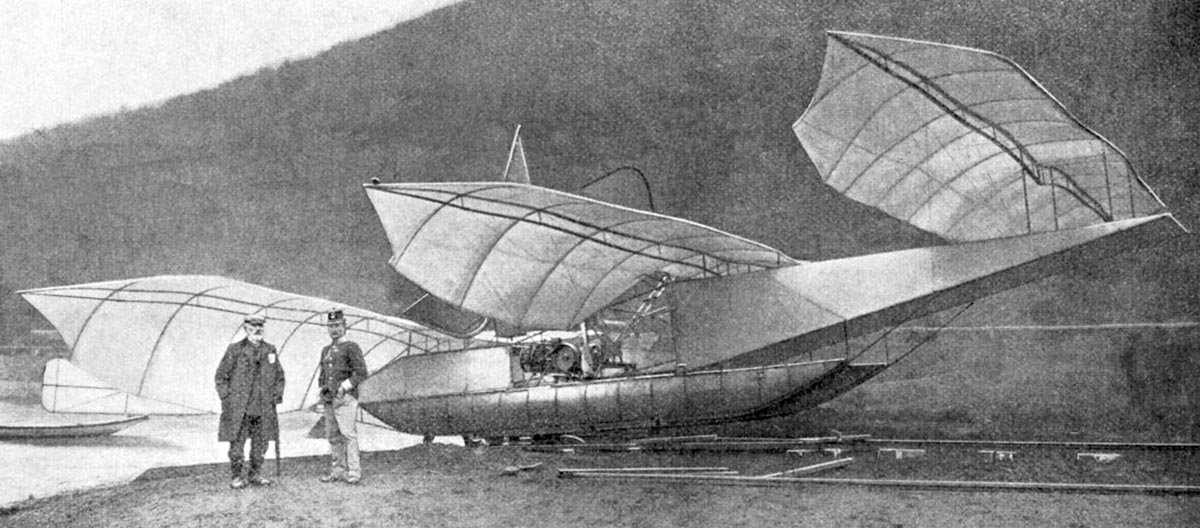Wilhelm Kress’ Drachenflieger
Photo showing Wilhelm Kress’ experimental Drachenflieger aircraft from 1901.
Pictured above is the Drachenflieger, which was an experimental aircraft designed in 1901 by Austrian engineer Wilhelm Kress. It’s name means Dragon Flyer in German, and it was an attempt by Kress to build the world’s first heavier-than-air flying machine. The craft consisted of a central undercarriage and three large pairs of wings, each set at a different height so they wouldn’t interfere with one another. It was meant to take off and land on the water, so Kress designed it to rest on two pontoons.
Design drawings of Wilhelm Kress’ experimental Drachenflieger aircraft from 1901.
The major innovation of the Drachenflieger was its use of a control stick for its flight controls. Kress had invented the control stick during the design process, and initial tests were favorable. He tested the craft at a reservoir outside Vienna, and it could successfully maintain flight while taxiing. The problem was the engine. Kress didn’t have the money to have an engine specifically built for his craft, so he bought an automobile engine instead. Unfortunately it weighed twice as much as he calculated for, and this extra weight prevented the Drachenflieger from achieving liftoff. He was able to achieve a series of hops along the water surface, but he was unable to achieve sustained flight. Kress then returned to testing while taxiing in order to refine the design.
Photo showing Wilhelm Kress’ experimental Drachenflieger aircraft from 1901.
The last flight of the Drachenflieger was on 3 October 1901. The craft was damaged beyond repair after Kress made a sudden maneuver in order to avoid a groyne. It ended up capsizing and sinking, which put an end to its life as a flying machine. At this point Kress was out of money, so he decided to abandon his dream of achieving heavier-than-air flight. It’s a shame, because the Drachenflieger was so unique-looking and it’s generally believed it could fly if it was properly powered.
Read more about other ideas for flying machines here.



